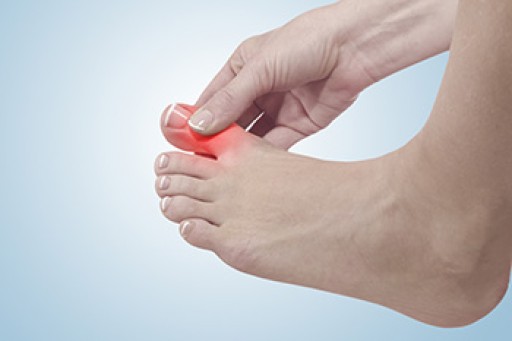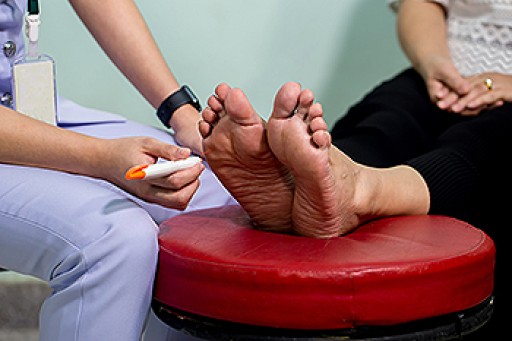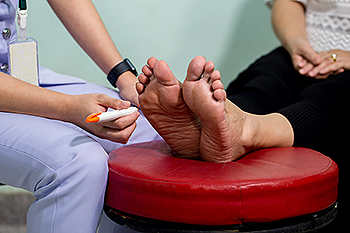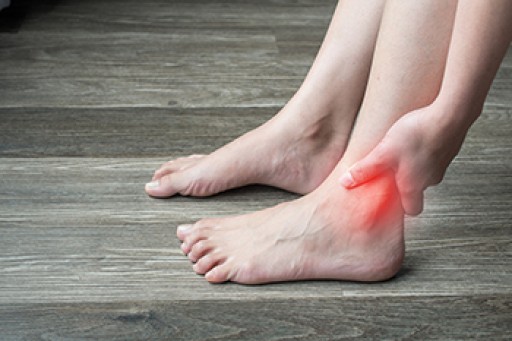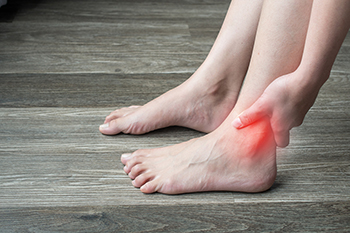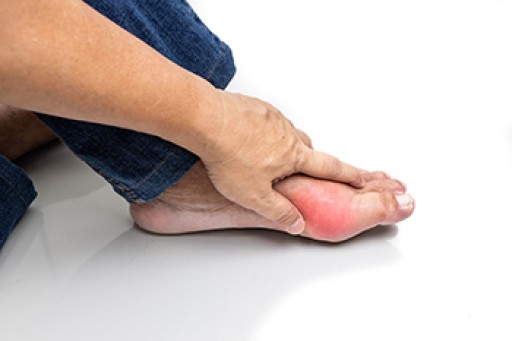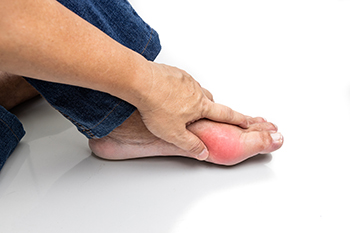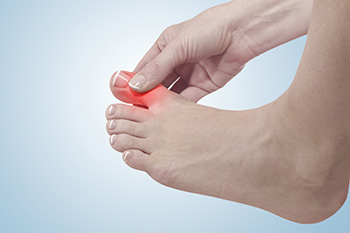
The cartilage in a joint can become damaged and worn down from the condition known as osteoarthritis (OA). This can expose bones in the damaged joint and cause them to rub together. OA often attacks the first metatarsophalangeal joint (at the base of the big toe). A variety of symptoms may occur including pain, swelling, and limited mobility. The body may respond by creating more bone which can develop into bone spurs that cause visible bumps, calluses, or a bunion in the big toe. In time, the pain can become more of a burning sensation and stiffness may set in to the point where the big toe becomes fixed (hallux rigidus) and unbendable. Age can be a contributing factor to OA, as well as prior injuries, obesity, and a genetic predisposition to the disease. Losing weight, taking anti-inflammatories, and icing the area may provide some relief from OA in the big toe. A podiatrist can provide orthotics, braces or splints, recommend proper shoes, suggest specific exercises and even use injectable corticosteroids to relieve pain and reduce swelling. In some cases, surgery may be necessary to remove deteriorated cartilage or repair/replace a severely damaged joint. Contact a podiatrist if you believe OA is causing pain and swelling in your big toe joint.
Arthritis can be a difficult condition to live with. If you are seeking treatment, contact Cary Golub, DPM from New York. Our doctor can provide the care you need to keep you pain-free and on your feet.
Arthritic Foot Care
Arthritis is a joint disorder that involves the inflammation of different joints in your body, such as those in your feet. Arthritis is often caused by a degenerative joint disease and causes mild to severe pain in all affected areas. In addition to this, swelling and stiffness in the affected joints can also be a common symptom of arthritis.
In many cases, wearing ill-fitting shoes can worsen the effects and pain of arthritis. Wearing shoes that have a lower heel and extra room can help your feet feel more comfortable. In cases of rheumatoid arthritis, the arch in your foot may become problematic. Buying shoes with proper arch support that contour to your feet can help immensely.
Alleviating Arthritic Pain
- Exercises that stretch the foot can prevent further pain and injury and increase mobility
- Most of the pain can be alleviated with anti-inflammatory drugs, heat, and topical medications
- Massages can help temporarily alleviate pain.
It is best to see your doctor for the treatment that is right for your needs and symptoms. Conditions vary, and a podiatrist can help you determine the right method of care for your feet.
If you have any questions, please feel free to contact our offices located in Williston Park, and Long Beach, NY . We offer the newest diagnostic tools and technology to treat your foot and ankle needs.
